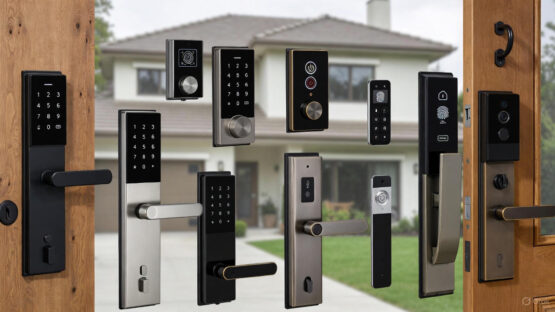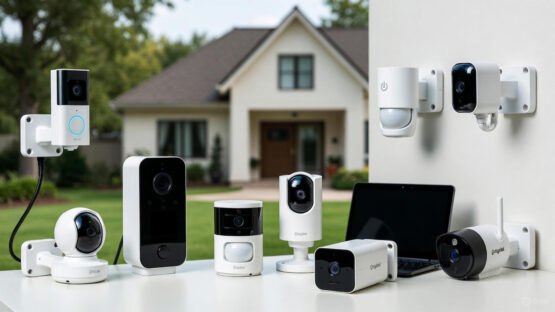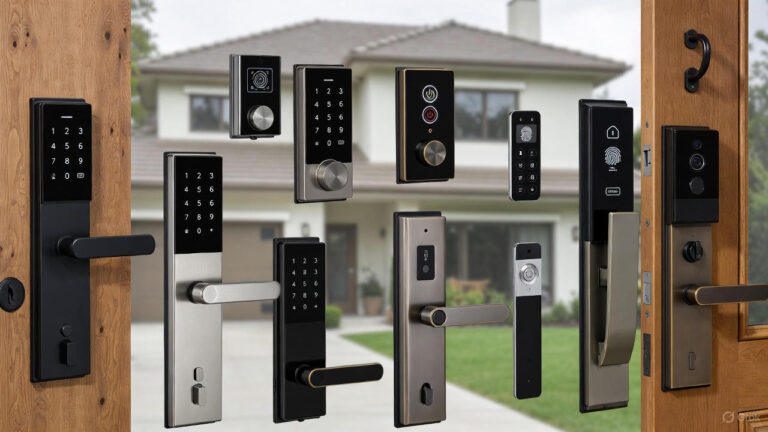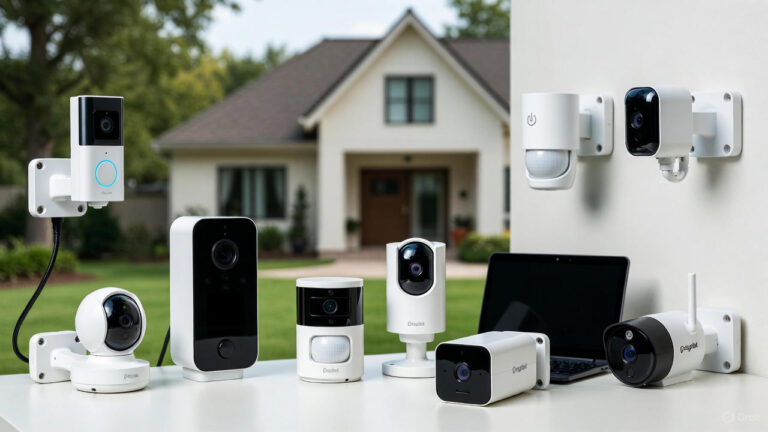Most people don’t lose all their money in one big event. Your bank account doesn’t just vanish overnight. What usually happens is slower and quieter. It’s the little money leaks that drain your cash day after day. A coffee on the way to work. A late fee because you forgot to pay a bill. An Uber ride that costs ten times more than the bus. None of those feel huge in the moment, but when you add them together, they start to take a real toll.
That’s the real danger. Small leaks don’t stay small. Over time, they grow into a hole that can sink even the strongest financial plan. Before you know it, you’re left wondering where all your money went.
This is why paying attention to the small stuff matters. These everyday habits might look harmless, but they’re often the reason people feel broke even when they have a steady income. The good news is that once you notice the leaks, you can start fixing them.
The money you save from plugging these leaks can become the start of your emergency fund. That fund becomes your cushion, the thing that keeps an unexpected bill or surprise expense from throwing your entire budget off track.
1. The $8 Coffee Habit
This one hurts because it’s so easy to justify. “It’s just coffee. It makes me feel alive. It’s my treat.” Fair. But let’s do the math: $8 every weekday is $40 a week, $160 a month, and almost $2,000 a year. You could take a vacation with that money. Instead, it went into paper cups tossed into trash bins.
Now, I’m not saying never drink coffee. I love coffee. But if your bank account is crying, you can’t keep pretending it’s harmless. A bag of good beans, a cheap French press (you can find one for $20), and a travel mug can give you the same buzz for about fifty cents a cup. Imagine brewing at home, filling your own mug, and still walking into work caffeinated—except with an extra $2,000 in your pocket by the end of the year.
2. Eating Out All the Time
Lunch “out” feels like a break. No dishes, no planning, no effort. But at $12 a pop, five times a week, you’re spending about $3,000 a year on midday meals. And that’s not counting dinners, weekend brunches, or late-night takeout.
Packing your own lunch doesn’t mean sad peanut butter sandwiches forever. Get some decent reusable containers (the kind with dividers, so your rice doesn’t mix with your chicken), and cook double portions at dinner. Leftovers become tomorrow’s lunch. An air fryer or slow cooker also works wonders—throw food in, walk away, and you’ve got meals prepped without much effort.
You’ll eat better, save thousands, and skip the awkward “$15 salad that wasn’t even filling” regret.
3. Subscription Overload
Here’s where it gets sneaky. You sign up for Netflix. Then Spotify. Then Disney+. Then Apple TV because it came free with your phone for three months. Except you forgot to cancel, and now it’s been charging you for two years.
The average person spends more than $200 a month on subscriptions without realizing it. That’s $2,400 a year—gone on autopilot. The fix is simple: sit down once a month, check your bank statement, and cancel what you’re not actually using. Keep one or two that bring you joy. Do you really need five streaming services when you spend most nights scrolling TikTok anyway?
4. Uber, DoorDash, and “Convenience” Apps
Don’t get me wrong—apps like Uber and DoorDash are genius. But they also eat your money alive. That $12 burger becomes $25 after delivery fees, tips, and “service charges.” Same for that $8 ride when you could’ve taken a $2 bus.
Convenience is expensive. If you’re using these apps occasionally, fine. But if you’re relying on them daily, you’re probably burning hundreds every month just for the luxury of not moving much. Cooking at home or picking up food yourself makes a massive difference. Pro tip: get a slow cooker or Instant Pot. Toss ingredients in before work, and dinner is ready when you get home—no app required.
5. Bank Fees
You know what feels like the ultimate insult? Getting charged $35 because you spent money you didn’t have. Or paying $3 to use an ATM because your bank’s machine wasn’t nearby. These fees add up, and banks love them.
Most people lose hundreds of dollars a year to bank fees without blinking. The fix: set up alerts so you don’t overdraft, keep a small emergency cushion in your account, and only use your bank’s ATMs. Better yet, find a bank that doesn’t nickel-and-dime you with fees in the first place.
6. Bottled Water & Convenience Store Drinks – Paying for Plastic
Buying bottled water feels harmless. Two bucks here, three bucks there. But if you’re grabbing one every day, that’s about $60 a month. Over a year, you’re spending $700+ on something you could literally get out of a tap. And don’t even start with those “energy drinks” or sodas from the gas station—they cost even more. The truth is, bottled water companies are selling you what you already have at home. Sure, sometimes you need one when you’re on the road, but as a habit, it’s a money drain. Get yourself a reusable water bottle, fill it before leaving the house, and suddenly you’ve saved hundreds. It’s not just cheaper, it’s better for the environment too.
7. Keeping Debt at “Minimum Payments” – The Slow Leak That Becomes a Flood
Credit card companies love minimum payments. Why? Because while you think you’re “handling it,” they’re racking up interest on you like a casino house. Paying $50 on a $1,500 balance sounds doable… until you realize it’ll take years (and thousands extra in interest) to actually clear it.
Minimum payments are like treading water—you’re moving, but you’re not going anywhere. And the longer you play that game, the more it costs.
The fix? Attack the balance. Even adding $20–$50 extra each month makes a huge difference in how fast you’re free. If it feels overwhelming, use the “snowball method” (knock out the smallest debts first for motivation) or “avalanche method” (tackle the highest interest rate first). Either way, just don’t get stuck in the minimum-payment hamster wheel.
8. Impulse Airport & Travel Spending – Souvenirs You’ll Forget About
Airports are like casinos: overpriced food, flashing shops, and impulse everywhere. That $8 snack or $25 “travel pillow” feels like a small splurge—until you add up every trip and realize you’ve spent hundreds on things you didn’t even need.
And let’s not even talk about souvenirs. Half the time, you buy something because you feel you “should,” not because you love it. Then it sits in a drawer gathering dust.
The fix? Pack snacks before you leave, bring your own water bottle, and budget for one meaningful souvenir instead of random clutter. Memories, photos, and experiences last way longer than that keychain or overpriced neck pillow.
9. Extended Warranties – Insurance You Don’t Really Need
Ever bought a new gadget and had the cashier ask, “Would you like the extended warranty for $99?” It sounds smart in the moment—after all, what if it breaks? But most products already come with a manufacturer’s warranty, and the odds of needing the extra coverage are slim. Stores push these hard because they’re pure profit. Over time, saying “yes” to every extended warranty means you’re paying hundreds for protection you’ll probably never use. Instead, put that money in your own “tech repair fund” and cover issues yourself if they actually happen.
10. Driving Everywhere Unnecessarily – Gas, Parking, and Wear-and-Tear
Cars are expensive even when they’re parked. Gas, insurance, parking fees, and maintenance all add up. If you’re hopping in the car for every little errand, those costs pile higher than you realize. A quick $10 gas fill here, $20 for parking downtown there—it doesn’t feel huge, but at the end of the month, your car expenses might be eating hundreds. Walking, biking, carpooling, or using public transit when possible saves money, lowers stress, and sometimes even gets you there faster (have you sat in traffic lately?). Driving is necessary, yes—but unnecessary driving is just burning cash.
11. Upgrading Phones Too Often – Paying for “Shiny”
Every year a new phone drops, and suddenly yours feels old. The ads make you think your camera is outdated or your screen is “last season.” But here’s the truth: that phone in your hand probably still does everything you need it to do—text, calls, social media, pictures, even banking. Upgrading every 1–2 years is like tossing money out just to keep up with marketing. A brand-new phone can run $1,000+, and if you’re financing it, that’s another bill on your plate. If your phone works, keep it. Use it until it really can’t keep up anymore. Trust me, your Instagram selfies won’t look any worse just because you didn’t upgrade to the latest model.
12. Not Meal Planning – Throwing Food (and Money) in the Trash
Here’s a leak that almost everyone’s guilty of: buying groceries with good intentions, then watching them rot in the fridge. You spend $100 on fresh food, but after a week of “forgetting to cook,” you toss half of it in the trash and order pizza instead. That’s not just wasted food—it’s wasted money.
Meal planning sounds boring, but it’s basically giving your groceries a job so they don’t just sit there. Spend 15 minutes on Sunday figuring out what you’ll cook, shop for those ingredients only, and prep ahead when you can. Suddenly, you’re eating at home more, wasting less, and saving hundreds over a year.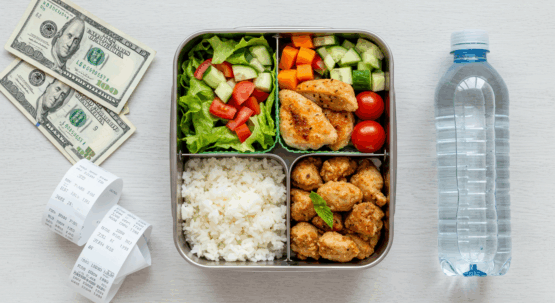
13. “Sale Shopping” – The Trap of Fake Savings
The giant red SALE sign is a master at tricking your brain. You walk into a store thinking you’re about to beat the system, but here’s the reality: you’re not saving money if you’re buying something you didn’t need in the first place. That $100 jacket marked down to $70 isn’t a $30 win. It’s a $70 expense you wouldn’t have had without the “deal.”
Retailers know exactly what they’re doing. They design sales to create urgency and nudge you into thinking, “I can’t miss this.” But real savings doesn’t come from finding clever excuses to spend. It comes from keeping your wallet shut unless the purchase is intentional. Next time you’re tempted, pause and ask: Would I buy this at full price if it weren’t on sale? If the answer is no, put it back and keep your money where it belongs.
14. Keeping Too Much Cash Idle – Inflation Is Eating It Alive
There’s nothing wrong with keeping some cash handy for small emergencies. But letting piles of it sit in a drawer, or in a bank account that earns next to nothing, is like letting termites nibble away at your money slowly. Inflation is always working in the background. That $1,000 sitting still today won’t buy the same amount of groceries or gas a year from now.
You don’t need to become an investing expert to fight this. Even moving your money into a high-yield savings account, or a basic money market account, puts it to work. The goal isn’t to hoard bills under the mattress but to make sure your savings are growing enough to keep pace with rising costs. Otherwise, what looks like “safe money” is quietly shrinking in value.
15. Gym Memberships You Don’t Use – Paying for Good Intentions
This one hurts because it feels productive. You sign up for a gym membership in January, full of motivation, swiping your card with visions of a “new you.” Fast forward a few months, and suddenly you’re paying $30, $50, or even $100 a month for a membership you barely use. That’s $600–$1,200 a year spent not on fitness, but on guilt.
The problem isn’t exercise itself, but buying into the idea that paying for access equals results. The truth is, plenty of people stay fit without a gym by walking, running, or doing simple workouts at home. If you’re not going regularly, the membership is nothing more than one of those sneaky money leaks that eats at your budget. Instead, try pay-per-class passes, use free online workouts, or build a routine that doesn’t require a monthly bill. That way, you get the health benefits without paying for good intentions that never quite make it out of your wallet.
16. Drinking Every Weekend – Bar Tabs That Bite Back
It starts with “just one drink” after work, then suddenly it’s Saturday night, and you’ve dropped $80 on cocktails that were mostly ice and sugar. Drinking out is sneaky because the price tag doesn’t hit you until the tab lands. A couple of rounds with friends, maybe a snack, a tip—and boom, half your grocery budget is gone. And that’s just one weekend. Do that a few times a month, and you’re looking at thousands a year. I’m not saying you can’t have fun. But swapping a few nights out for a low-key hang at home (grab a six-pack or make cocktails yourself) can cut the cost down to a fraction. Same laughs, way less damage to your wallet.
17. Ignoring Small Leaks at Home – Your Utility Bills Are Crying
A dripping faucet doesn’t look like much. A light left on all night seems harmless. But those “little things” balloon when the bill arrives. Running water, wasted electricity, or heating an empty house are basically money leaks hiding inside your walls. For example, a leaky faucet can waste hundreds of gallons a year. That’s money literally going down the drain. And cranking the AC when no one’s home? That’s like heating or cooling your furniture instead of yourself. Fixing leaks, using energy-efficient bulbs, or even just being mindful about turning things off can shave real dollars off your monthly bills.
18. Fast Fashion – Clothes That Don’t Last
We’ve all been there: scrolling through a website and spotting a $12 shirt that looks just like something from a big-name brand. You hit “buy” because, hey, it’s cheap. But cheap clothes are like fast food—they feel good in the moment, but they don’t last. After a few washes, that shirt fades, stretches, or falls apart, and you’re back online buying another one. Fast fashion isn’t a bargain if you keep replacing it. Instead, buying a few quality basics (even if they cost more upfront) actually saves you money because they last. Think of it as spending smart instead of spending often.
19. Overinsurance or Duplicate Coverage – Paying for Protection You Don’t Need
Insurance is important—no one’s arguing that. But paying for more than you need is like buying two umbrellas for one head. Many people stack policies without realizing they overlap. For example, your credit card might already cover rental cars, yet you’re paying extra for insurance at the counter. Or maybe you’re paying for gadget insurance when your homeowner’s policy already covers electronics. These small overlaps add up to wasted money every month. The fix? Review your policies once a year. Cut the fat, keep what matters, and stop paying for coverage you’ll never use.
20. Chasing Every “New Thing” – Hobbies That Collect Dust
I’m trying so hard to be polite today to the people that are chasing every “New Thing” – Hobbies that collect dust. One month it’s pickleball gear, the next it’s a fancy camera and binoculars because birdwatching popped up on your feed. Then comes the $300 air fryer you used exactly twice—once the day you unboxed it and once the day after, just to prove you didn’t waste your money.
The problem isn’t trying new things. It’s buying into every passing trend without stopping to ask, “Am I really going to use this long-term?” That treadmill in the corner? It’s not fitness equipment—it’s a money monument to good intentions.
Here’s a simple fix: before swiping your card, borrow or start with the cheaper version. If you’re still excited and using it after a month, then consider upgrading. That way, your money fuels habits you actually stick with instead of becoming part of the clutter collecting dust around your house.
21. Gym Memberships You Don’t Use – The Monthly Donation to Nowhere
We’ve all done it: January rolls around, you’re fired up with resolutions, and you swipe that shiny new gym membership. “This year’s the year,” you say. Fast-forward three months… the only workout you’ve done is walking past the gym on your way to grab fast food. Yet, that $40–$100 a month keeps leaving your account faithfully, like clockwork.
Gyms know this game. They survive not on the handful of people showing up daily but on the masses who pay and rarely step foot inside. If your key fob hasn’t seen the scanner in months, you’re not funding fitness—you’re donating to the gym charity.
The fix? Be honest. If you’re not going, cancel it. Try free YouTube workouts, bodyweight routines at home, or even walking in your neighborhood. If you miss the accountability, test pay-as-you-go classes or smaller studios. That way, you only pay for what you actually use, not what you wish you used.
22. Bank Fees – Paying Banks to Use Your Own Money
Few things are more frustrating than being charged just to access your own money. Yet many people quietly lose $10 to $30 every month to ATM fees, overdraft charges, or “maintenance fees.” Over a year, that adds up to hundreds of dollars gone, often without realizing it. This is one of the most frustrating money leaks because you are literally paying for nothing in return.
The fix is to stop accepting these charges as normal. Many online banks and credit unions offer free checking accounts with no hidden fees. Even at traditional banks, keeping a closer eye on your balance and using in-network ATMs can save you from unnecessary costs. Your money should be working for you, earning interest, not lining the pockets of banks through fine print charges.
23. Car Payments That Never End – Financing Your Lifestyle, Not Just Your Ride
Cars are one of the most common financial traps. The moment you drive a brand-new car off the lot, it drops in value by thousands. Yet many people sign up for long loan terms with hefty monthly payments, all to keep up with the latest models. And when one loan is finally paid off? Many people trade in and start the cycle all over again. These ongoing car payments are not just a cost of transportation, they are one of the biggest money leaks draining your monthly budget.
Breaking this cycle means rethinking what “good enough” looks like. A reliable, paid-off used car may not have that new car smell, but it will free up hundreds of dollars every month. That money can go toward savings, debt repayment, or even investing instead of keeping you locked in endless car debt. The financial freedom of owning your car outright feels far better than any upgrade package or shiny new feature.
24. Smoking & Vaping – Burning Your Money (Literally)
Some money leaks are hidden, but smoking and vaping are as obvious as it gets. A pack-a-day smoking habit can cost more than $2,500 a year depending on where you live. Vaping may look cheaper at first, but once you add up pods, liquids, coils, and devices, the yearly total is just as painful. Beyond the health consequences, this habit eats away at your financial health every single day.
Think about what that money could do elsewhere. Redirecting even a portion of that spending into a savings account, emergency fund, or investment could completely change your financial picture. Quitting is difficult, but every pack or pod skipped is more money staying in your pocket. Over time, it’s not just your lungs that benefit — your budget breathes easier too.
25. Bottled Water & Convenience Drinks – Paying for Plastic
Let’s be real. Paying $2–$3 for bottled water is like buying air in a bag. Yes, water is important. But in most places, the tap is perfectly fine (and often cleaner than what’s in the bottle). Add in sodas and energy drinks from convenience stores, and suddenly you’re sipping away hundreds each year.
The companies don’t just sell you hydration—they sell you the idea of “cool.” But what you’re actually doing is draining your wallet for something you could get free or at pennies on the dollar.
The fix? A solid reusable water bottle. Fill it at home, refill throughout the day, and skip the store. Bonus: you cut down on plastic waste while keeping money in your pocket.
26. Buying Snacks Every Time You Step Out
It starts small. You’re at the gas station, grab a bag of chips. At the mall, you buy a pretzel. Quick errand? Somehow, there’s always a soda or chocolate bar in your hand. Each one feels like nothing—just $2 or $3. But over weeks and months, that habit piles up into hundreds of dollars you didn’t even realize you were spending.
The fix? Keep snacks at home and in your bag or car. A pack of granola bars from the grocery store costs the same as one or two bought at a gas station. Not only do you save money, but you’ll also probably end up eating better, too.
27. Buying Fancy Coffee Gadgets You Don’t Use
Yes, we already roasted the $8 coffee habit. But here’s the other side: buying every coffee gadget under the sun—milk frothers, capsule machines, pour-over kits, grinders, flavored syrups, cups with built-in Bluetooth (don’t ask). Before long, you’ve spent more than you ever would have at Starbucks. And half of it sits unused.
The fix? Pick one method you like and stick with it. A simple coffee maker or French press is enough. Gadgets don’t make coffee taste better if they’re just collecting dust in your kitchen.
28. Ignoring Health Until It Gets Expensive
Skipping dentist visits, ignoring checkups, or brushing off small health issues might feel like saving money… until it isn’t. That toothache turns into a root canal. That untreated cough becomes a hospital bill. Suddenly, the “savings” disappear, and you’re paying ten times more.
The fix? Preventive care. Brush, floss, eat decently, get checkups, and deal with problems while they’re small. A $100 checkup today can save you from a $5,000 hospital stay later. Think of it as protecting your future wallet.
29. Overdraft Protection (That Isn’t Really Protection)
Banks love to market overdraft “protection.” Sounds nice, right? Except what it really means is they’ll let your account go negative and then charge you $35 for the privilege. That’s not protection—it’s a trap. And if it happens a few times a month, you’ve just thrown away hundreds for nothing.
The fix? Keep a small buffer in your account. Even $100 sitting there as a cushion can save you from overdraft fees. Or link your checking to savings so it pulls automatically. Better yet, track your balance weekly so you’re not blindsided.
30. Lottery Tickets – Paying for Hope That Almost Never Comes
“Somebody’s gotta win!” Sure. But it’s not you. The lottery is designed to take in billions and hand back scraps to a few lucky winners. For most people, it’s not entertainment—it’s a slow money leak. A few dollars a week doesn’t sound bad, but add it up over a year and you’ve spent hundreds for almost nothing in return.
The fix? If you like the thrill, set aside a tiny “fun budget” for it and stick to it. But don’t let it be your retirement plan. A better bet? Put that same money into a savings or investment account. At least then, your odds of winning are 100%.
31. Paying for Storage Units You Don’t Need
This one hurts because it feels harmless until you do the math. You sign up for a storage unit thinking it’s temporary, just a place to keep “extra stuff” until you figure things out. Months pass, then years, and suddenly you’ve spent $50, $100, or even $200 every month just to keep things you don’t even use. Out of sight, out of mind, right? Except the bill never takes a break. Over a year, that’s easily over a thousand dollars gone.
Here’s the truth: if something is valuable enough, it belongs in your home, not in a dusty box across town. Most storage units end up filled with furniture no one sits on, clothes no one wears, and “sentimental” items that aren’t sentimental enough to keep nearby. This is one of the biggest silent money leaks because it hides behind the idea of “keeping things safe.” The fix is simple but tough: go through the unit. Sell what has value, donate what doesn’t, and cancel the monthly payment. Not only will you free up money, you’ll free up mental space too.
32. Buying Extended Warranties on Everything
Picture this: you’re at the checkout with a shiny new laptop or TV, and the clerk asks, “Do you want the extended warranty?” It sounds reasonable. After all, what if it breaks? Most people say yes out of fear, not because it makes sense. The truth is, most products already come with a manufacturer warranty, and the odds of them breaking right after that period are slim. By the time something does go wrong, you’ve probably upgraded or moved on. Those $50 to $200 warranty add-ons are pure profit for the company — and one of the most common money leaks hiding in plain sight.
Instead of buying into fear, skip the warranty. If you really want peace of mind, take the money you would’ve spent and set it aside in a small emergency fund. That way, if something breaks, you’ve got cash to fix or replace it without throwing away money upfront on protection you’ll probably never use.
33. Buying Fast Food Because You Didn’t Plan
We’ve all lived this one. You’re driving home after a long day, stomach growling, no dinner waiting at home. The glowing drive-thru sign pulls you in. Ten dollars today, twelve tomorrow, and before you know it, half your paycheck is going to fries, sodas, and combo meals. The problem isn’t that you enjoy fast food, it’s that lack of planning makes it your default.
This is one of those money leaks that feels small but eats away at your budget over time. The fix doesn’t mean you have to give up takeout forever. Just plan ahead a little. Cook double portions when you make dinner and save the extras. Keep easy meals like pasta, rice, or frozen veggies at home. Even having bread and sandwich fixings can stop the drive-thru temptation. A few minutes of prep saves you hundreds over the course of a month, and it keeps you from turning hunger into debt.
34. Leaving Lights, Heat, or AC Running
This leak is sneaky because you don’t see the money draining until the utility bill lands in your mailbox. Leaving the AC blasting with windows open, cranking the heat in rooms no one uses, or keeping lights on all night — it feels like nothing in the moment. But add it up month after month, and suddenly your bill is double what you expected.
Money leaks like this are more about habits than big changes. Get smarter about how you use energy. Turn things off when you leave the room. Switch to LED bulbs that sip power instead of guzzling it. If you can, install a programmable thermostat so the heat or AC isn’t working when nobody’s home. These aren’t sacrifices, they’re simple habits that shave real dollars off your bills without changing your lifestyle.
35. Random Upgrades You Don’t Need
This one might sting a little because it’s all about shiny distractions. Your phone works perfectly fine, but the new one has a slightly better camera. Your TV is crystal clear, but now there’s a model that’s two inches bigger. Or maybe you’re tempted by a car with heated cup holders, even though the one you’re driving runs just fine. That’s not progress — that’s how random upgrades quietly drain your savings.
Random upgrading is one of those money leaks disguised as “treating yourself.” But really, you’re paying hundreds or thousands for things that don’t actually improve your life in a meaningful way. Before you buy, pause and ask: “Does what I have already work?” If the answer is yes, keep it. Upgrade when something breaks, not when something shinier shows up. Your bank account will thank you, and you’ll realize that real upgrades happen in your savings account, not on a screen or in a showroom.
36. Unused Warranties on Appliances
Retailers love to push those “extended warranties” at checkout. You buy a blender for $80, and suddenly they’re asking if you’d like to pay an extra $20 to “protect it.” Most of the time, that’s money wasted. Why? Because most appliances already come with a manufacturer warranty. And by the time something breaks, you’ve either replaced it or the cost of repair is less than what you paid for the warranty in the first place. If you really want peace of mind, check if your credit card already offers extended coverage on purchases — many do. That way, you’re not double-paying for protection you may never use.
37. Banking Foreign Transaction Fees
If you’ve ever swiped your card abroad or shopped online from another country, you may have noticed a strange little charge appear on your statement. That’s the foreign transaction fee, usually around three percent of your purchase. On paper, three percent doesn’t look like much. But imagine you’re traveling for two weeks, spending $2,000 between hotels, meals, and shopping. Suddenly, that “tiny” fee adds up to $60 — money you got nothing in return for.
This kind of leak is easy to overlook because it hides in the fine print of your statement. Yet it’s one of the simplest money leaks to fix. Many credit cards now come with zero foreign transaction fees, and they’re widely available with no annual cost. Another option is to carry and use local currency for purchases when possible. Instead of padding your bank’s pockets, that $60 could cover a special dinner, an excursion, or a gift you actually enjoy from your trip.
38. Car Insurance Add-ons
Car insurance is necessary, but it’s also a place where companies quietly tack on extras that you may not actually need. Roadside assistance, rental car coverage, towing packages — the list goes on. These add-ons sound important when you’re signing the paperwork, but here’s the catch: many people already have those benefits somewhere else. Credit cards often include rental car coverage. AAA memberships provide towing and roadside help. Some new-car warranties even include free roadside assistance for years.
If you don’t review your policy carefully, you could end up paying twice for the same service. That’s not just wasteful, it’s one of those money leaks that lingers in your budget for years without you realizing it. Take the time to call your insurer, ask questions, and trim off the extras that overlap with services you already have. Those small monthly savings can add up to hundreds over the life of your policy.
39. Seasonal Holiday Spending
Holidays are supposed to bring joy, but for many households, they also bring a financial hangover. The spending starts small — a string of lights, a gift for a coworker, a few rolls of wrapping paper. But by the time December is in full swing, your wallet is drained by decorations, gifts, party outfits, festive meals, and maybe even that $80 ugly sweater you’ll wear once. The real problem isn’t celebrating, it’s overspending without a plan.
This is one of the most predictable money leaks, because holidays happen every year, yet many people treat the expenses as a surprise. The fix is to plan ahead. Decide on a holiday budget early, and stick to it. Shop off-season when decorations and wrapping supplies are heavily discounted — sometimes as much as 70 percent off in January. Keep a small savings pot just for holiday expenses so you’re not left scrambling. That way, you can enjoy the celebrations without dreading the credit card bill that shows up in January.
40. “Free Trial” Traps
It always sounds harmless. A website or app says, “Try it free for seven days.” You sign up, enjoy a show or two, and then forget about it. Weeks go by, and suddenly your bank statement shows you’ve been paying $9.99 every month for something you didn’t even remember signing up for. This is not an accident. Companies count on you forgetting to cancel, because that’s how they make their money.
Free trials can turn into sneaky money leaks if you’re not careful. The best way to stop it is to treat a trial like a ticking clock. Set a reminder on your phone the same day you sign up so you cancel before the charge kicks in. Some people even use virtual cards that expire after the trial ends. A free trial is only free if you actually close it before the billing starts. Otherwise, you’re just paying for your own forgetfulness.
41. Paying for Too Many Apps
Our phones are full of them. That meditation app you swore would change your mornings. The game you downloaded for “just a dollar.” The fitness tracker that promised six-pack abs. Each one costs $2.99 here, $7.99 there, and they quietly drain your account every month. On their own, they don’t look like much. But stack a few together, and suddenly you’re losing $20 to $40 every month on apps you never open. That adds up to nearly $500 a year — gone on digital clutter.
To stop this money leak, you have to be honest with yourself. Scroll through your phone subscriptions and ask, “When did I last use this?” If you can’t remember, it’s time to cancel. Keep the apps that bring you real value, and cut the rest. Your phone should make your life easier, not silently chip away at your wallet.
42. Drive-Thru Extras
The drive-thru feels cheap. You pull in thinking, “I’ll just grab a burger and fries.” But then you add a soda, maybe a dessert, and suddenly that $5 meal has turned into $12. Do that three or four times a week, and you’re spending hundreds of dollars a month on nothing more than habit. The truth is, fast-food chains make their biggest profits on drinks and sides, not the main meals.
This is one of the simplest money leaks to fix. Order the basics, skip the soda, and bring your own water from home. Not only will you save money, but you’ll also cut out empty calories that don’t do you any favors. Those “little extras” don’t feel like a big deal in the moment, but they quietly eat away at your budget over time.
43. Not Negotiating Bills
Most people don’t realize that bills are negotiable. Your internet, cable, and even phone plans are priced with flexibility in mind. Companies run promotions all the time, but they won’t call you to say, “Hey, we’d like to lower your bill.” If you never ask, you’ll just keep paying the higher rate.
A single phone call can make a difference. Spend 10 minutes saying, “I’m shopping around for better deals,” and you could shave $20 to $40 off your monthly bill. That’s $240 to $480 a year just for speaking up. Silence can be expensive, and this money leak keeps draining people simply because they don’t realize the power of asking.
44. Storage Units for Stuff You Don’t Use
Storage units sound useful at first. You think, “I’ll just keep my extra things there until I figure it out.” But months turn into years, and now you’re paying $100 or more every month to store old furniture, boxes of clothes, or items you haven’t touched in forever. That’s $1,200 a year to keep things you clearly don’t need.
This is one of the most painful money leaks because it’s tied to guilt. You paid for those items once, and now you’re paying again just to keep them out of sight. A better approach is to sell what you can, donate the rest, and move on. If something isn’t valuable enough to keep in your home, it probably isn’t worth paying rent for in a storage unit.
45. ATM Fees
ATM fees are the kind of money leak that doesn’t sting until you add them up. You’re out, you need cash, and the nearest machine isn’t your bank. The ATM charges $3.50, and then your own bank piles on another $2.50 for using an “out-of-network” machine. That’s $6 for the privilege of accessing your own money. Do that once a week, and you’re paying over $300 a year for absolutely nothing.
The smarter move is to plan ahead. Withdraw cash when you’re already at your bank or add it to your grocery run. Even better, some banks will reimburse ATM fees, so switching accounts could save you a lot in the long run. These small charges may feel minor, but they’re one of those quiet money leaks that can drain your finances over time if you’re not paying attention.
46. Unused Gift Cards
Almost everyone has a drawer, a purse pocket, or a glove compartment stuffed with forgotten gift cards. Birthdays, holidays, or those “thank you for shopping with us” rewards — they pile up fast. The problem is, an unused gift card is not a gift at all. It’s free money sitting idle, and billions of dollars in gift cards go unspent every single year. That’s one of the sneakiest money leaks of all: you think you’ve got value, but it’s trapped in plastic.
Instead of letting them collect dust, treat gift cards like cash. Use them on groceries, gas, or household essentials. If you don’t shop at that store, regift the card to someone who will. Better yet, some websites let you trade or sell them for cash. The bottom line? Money leaks aren’t always about spending too much — sometimes they’re about not using what you already have.
47. Buying Cheap That Costs More Later
It’s tempting to grab the cheapest option on the shelf. A $20 pair of shoes. A bargain kitchen gadget. A no-name phone charger. But here’s the trap: cheap things often fall apart faster, forcing you to replace them again and again. Over time, you spend more money than if you’d invested in quality from the beginning. This is the classic “buy cheap, pay twice” cycle, and it’s one of the money leaks people don’t even realize they’re stuck in.
The smarter move is to pause and think long-term. Before buying, ask: How long will this last me? Will I be back here in two months replacing it? Spending a little more upfront for quality can save you hundreds in the long run, and it reduces clutter from broken or worn-out junk. Remember, being cheap isn’t the same as being smart with money. Avoiding this money leak is all about buying with intention, not just impulse.
48. Expensive Hobbies You Don’t Stick With
Hobbies are supposed to bring joy, not regret. But let’s be honest — how many of us have golf clubs in the garage, a camera collecting dust, or a mountain bike that only saw the trail twice? This is one of those money leaks that looks harmless at first, but it adds up fast. A single “starter kit” for photography or fishing can cost hundreds, sometimes thousands, and if you don’t stick with it, you’re left with a pile of expensive gear and a lot of guilt.
The fix is simple: start small. Borrow from a friend, rent equipment, or buy used before splurging. If you’re still passionate six months later, then upgrade. That way, your money is going toward habits that truly stick instead of becoming a museum of good intentions. The real danger isn’t trying new hobbies — it’s jumping all in with your wallet before you’re sure the interest will last.
49. Forgetting Loyalty Rewards or Points
Rewards programs are everywhere: credit card points, airline miles, grocery store loyalty programs. They’re meant to help you save money or even get things for free. But here’s the catch: those points only matter if you use them. Too often, people let them expire, forget to redeem them, or don’t even know how many they’ve earned. It’s like leaving free money on the table. That’s another hidden money leak most people never think about.
The fix? Treat rewards like real dollars because that’s exactly what they are. Check your accounts regularly, set reminders, and redeem points before they vanish. Use miles for a flight, cash back on your card for bills, or loyalty points for discounts at the grocery store. Don’t let companies pocket your unclaimed rewards. You already earned them, so don’t let this simple money leak drain away your savings.
50. Overbuying Groceries You Don’t Use
We’ve all done it. You walk into the grocery store hungry, your cart fills up with things that weren’t on your list, and a week later half of it ends up in the trash. It feels like a small waste, but multiply that week after week, and you’ve got one of the biggest money leaks hiding in plain sight. Americans throw away hundreds of dollars every year on spoiled or unused food, and the sad part is most of it could have been avoided with a little planning.
Here’s the fix: plan your meals before you shop, write a list, and stick to it. Better yet, never shop on an empty stomach because hunger makes everything look like a good idea. Another tip? Buy smaller amounts of fresh items you know you’ll actually eat, and store leftovers properly. Food waste isn’t just bad for the planet — it’s bad for your wallet. By plugging this money leak, you’ll save real cash and cut down on guilt from tossing out good food.
Conclusion
Money doesn’t usually disappear in one big moment. It slips away slowly, through small choices that don’t feel like a big deal at the time. A subscription you forgot to cancel. A gift card you never used. An Uber ride that cost far more than the bus. A coffee run that turned into a daily routine. On their own, none of these seem dangerous. But when they stack up, they can drain your finances before you even notice.
The truth is, you don’t need to give up every comfort or live without enjoyment. Fixing just a few of these leaks can free up hundreds, and in many cases thousands, of dollars every year. That money could finally help you build an emergency fund, pay off debt, or start investing in something that actually grows over time.
It helps to picture your money like water in a bucket. If there are holes in the bottom, the water will always run out no matter how much you pour in. Start plugging even the biggest holes, and suddenly that bucket begins to fill. Bit by bit, you’ll see progress, and that progress can change everything.
Follow us on Facebook and Instagram for the latest updates and exclusive content!

